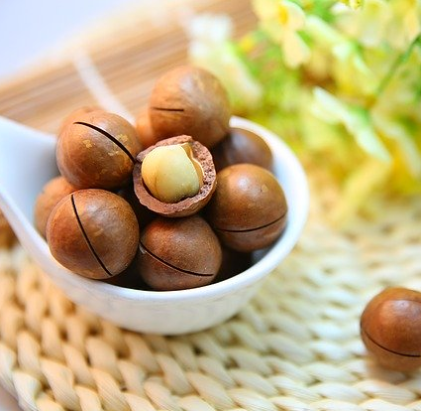- Phytopedia
- NUTS
- Macadamia

GEEK TALK
Macadamia integrifolia, Macadamia tetraphylla
BUT WE TALK
Queensland nut, bush nut, maroochi nut, bauple nut, Maikāḍāmiyā (Hin)
DID YOU KNOW?
The genus Macadamia was named after John Macadam, MD, Secretary of the Philosophical Institute of Victoria after a British colonist colleague discovered the unknown tree in Australia.
The genus consists of at least 10 species, only 2 of which produce edible nuts, the smooth shelled Macadamia integrifolia and the rough shelled Macadamia tetraphylla.
Macadamia nuts grow on evergreen trees ranging from 6-40ft high and they typically begin to bear fruit around 7 years after plantation. The edible part is the white kernel with a smooth surface, known for its sweet taste and nutty aroma.
Macadamia nuts are usually eaten raw and a nutcracker is required to penetrate the outside shell. They are often roasted, salted or sweetened and its crunchy texture can often be sprinkled over salads.
Macadamia oil is very similar to olive oil and can be used similarly when cooking. Macadamia butter is gluten-free, high in protein and makes for a good substitute.
KITCHEN PHARMACY
- Like many nuts, macadamia nuts have been proven to help lower one’s cholesterol especially the bad cholesterol and are very heart-healthy.
- They are packed with nutrients, minerals, and vitamins but are toxic to dogs.
- Macadamia oil is often an ingredient in skincare and cosmetic products in general.



